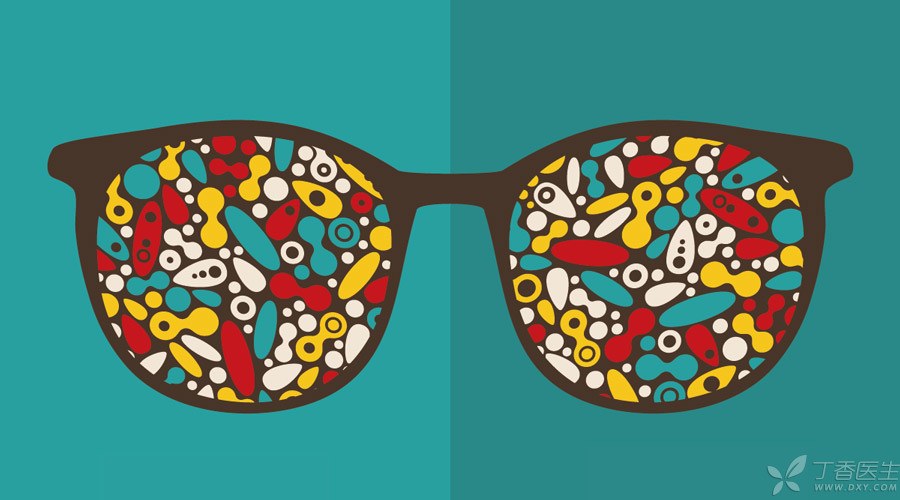
I have a mentor who is a chief physician of orbital diseases. In his clinic, besides patients with various eye tumors, there are also a large number of patients with [thyroid-related eye diseases].
These patients, like many of our readers, may have many questions in their hearts. But the director is too busy to find time to answer them. So for a long time, we small doctors played the role of interpreter.
The WeChat public number of thyroid doctor, like this [little doctor], explains thyroid-related knowledge to everyone.
Today, we will talk about this special eye disease.
Is what a thyroid-related ophthalmopathy?
Some thyroid diseases belong to autoimmune diseases, that is, the immune system mistakenly attacks the human body’s own components as [enemies] and produces some antibodies and immune cells against its own components, thus damaging its own organs.
Thyroid problems caused by autoimmune diseases, the antibodies it produces not only attack the thyroid gland, but also like to attack tissues around the eyeball, including muscles and connective tissues around the eyeball, resulting in inflammation, edema, cell damage and dysfunction in these tissues, which leads to thyroid-related ophthalmopathy.
Why should thyroid patients be careful?
Thyroid-related ophthalmopathy is sometimes commonly known as [hyperthyroidism exophthalmia], which shows that hyperthyroidism patients are the main onset population.
In addition, the scope of the disease also includes patients with hypothyroidism caused by various reasons.
No matter what kind of situation, the severity of the disease is not absolutely proportional to the level of thyroid function. As long as there has been an abnormality of thyroid function, no matter whether it is treated well or not, no matter how long the thyroid function has stabilized, there is a possibility of onset.
Most people have thyroid problems first and then thyroid-related ophthalmopathy. There are also some people who have eye diseases first and thyroid problems later. There are also a small number of patients who have not found thyroid diseases from beginning to end, only ocular manifestations.
In addition to thyroid diseases, some researchers have also found that the disease may be related to heredity, smoking, radiation and other factors.
Early detection of thyroid-associated ophthalmopathy
If the following symptoms occur, you should be more cautious.
1. Eyelid retraction: Under normal circumstances, Our upper eyelid will cover the black eye. The upper eyelid retraction means that the position of the upper eyelid is raised when the eye is opened naturally. Causing the above white eyes to appear [big and fierce]. Sometimes the lower eyelid will shrink back to reveal the lower white eyes. If it only happens in one eye, sometimes it will be mistaken for good. The eyelid of the eye is drooping, but it is not.
2. Exophthalmos: This is also one of the reasons why the eyes [get bigger and fiercer].
3. Red swelling of eyelid: This is the manifestation of inflammation of soft tissue around eyes.
4. Incomplete eyelid closure and trichiasis: the upper and lower eyelids are not closed properly, and eyelashes are inverted inward to rub the eyeball, which is basically a secondary change caused by the previous 3 points. Among them, the eyelid closure is the most obvious when sleeping. I may not know it and need my family to find it.
5. Eyeball deflection: Initially, the rotation of the eyeball in certain directions is uncoordinated, which may further develop into fixed eyeball or fixed deflection in a certain direction.
6. The eyes are obviously red, photophobia, tears, foreign body sensation, pain, diplopia, vision decline, etc.
These eye changes may further cause conjunctivitis, keratitis, strabismus, optic nerve compression, glaucoma, etc. Once any one occurs, the eyes will feel very uncomfortable.
The manifestations of thyroid-related ophthalmopathy are very diverse. Each person may have only one or two changes, but enough attention should be paid to them.
In the recently popular Korean drama < Descendants of the Sun > >, Song Meiren’s surprised expression with her eyes wide open instantly perfectly explains what’s name [upper eyelid retreat]. If the eyelids are like this, it would be abnormal.

(Medical students really can’t watch TV plays well…)
Suspected to have thyroid related eye diseases, how to do?
If your eyes feel uncomfortable, you can go to the hospital’s ophthalmology department. If you suspect thyroid-related eye diseases, you can ask an ophthalmologist to help you judge them. If necessary, both endocrinology department and ophthalmology department should see them.
Endocrinology: Check thyroid function and treat thyroid problems according to the doctor’s advice. Some still need thyroid surgery.
Ophthalmology: If there are obvious eye changes, endocrinologists can also see them at a glance. However, only when they go to the ophthalmology department and conduct a comprehensive examination through ophthalmic equipment can they find some problems that are not easy to be found by naked eyes, such as trichiasis, keratitis, glaucoma, early strabismus, etc., and give targeted treatment.
More importantly, thyroid-related ophthalmopathy has various manifestations, so the treatment is also very personalized. Sometimes two departments are required to consult and negotiate the best treatment plan.
